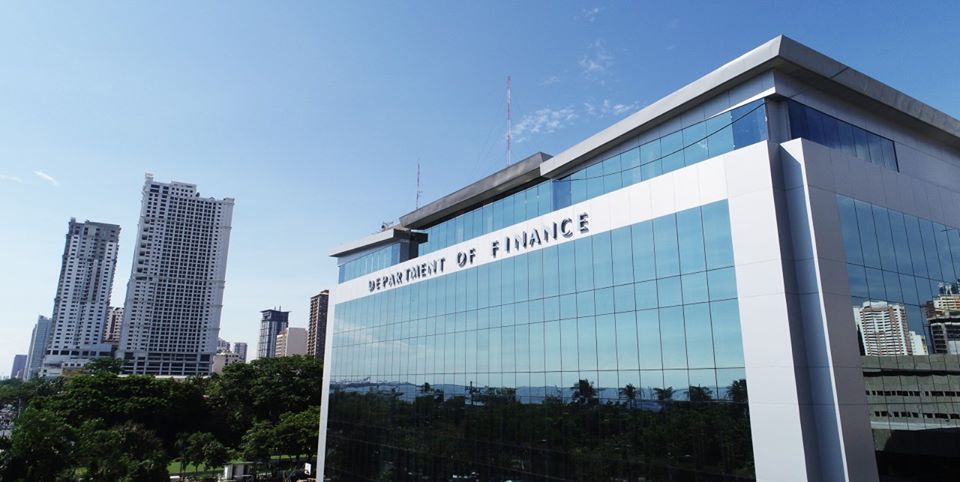Gov’t eyes insurance for P1.9T public assets
MANILA, Philippines—The government has so far included non-financial public assets worth P1.9 trillion in its registry system aimed at not only facilitating more efficient use but also insuring these properties.
Citing a Bureau of the Treasury (BTr) report, the Department of Finance (DOF) said the BTr’s national asset registry system (Nars) covered 380,817 government properties nationwide as of end-2021.
“These include roads, bridges, school buildings, power plants, towers, hospitals, and irrigation facilities,” the DOF quoted National Treasurer Rosalia de Leon as saying.
“The new entries to this consolidated database of non-financial, strategically important state assets were 5,819 properties, mostly from the Department of Transportation (DOTr)’s attached agencies, with a combined value of P361 billion,” the DOF said.
“We will continue to expand the coverage of the Nars to improve the oversight and management of non-financial public assets,” De Leon told Finance Secretary Carlos Dominguez III recently.
Article continues after this advertisementThe BTr established Nars in 2017 “to maintain a reliable inventory of the national government’s non-financial assets and help in the monitoring, inspection and validation, and management of assets under custody by the national government,” the DOF noted.
Article continues after this advertisementIn 2020, President Rodrigo Duterte’s economic team also put in place the Philippine government asset management policy (PGAMP) after a 2018 study conducted by PricewaterhouseCoopers on behalf of the government and the World Bank showed that there was no single agency in charge of asset management and registry, as well as no available information technology (IT)-based centralized asset inventory in many agencies.
The same study showed that there was “lack of policies on asset management, insurance, and disaster risk management; limited institutional accountability for asset management; and discrepancy on data maintained by the property units vis-à-vis the books of accounts of certain agencies.”
A technical working group (TWG) on asset management had been formed under the interagency Development Budget Coordination Committee (DBCC), tasked with instituting and putting into operation the Philippine government asset management policy for all non-financial assets, such as lands, buildings and infrastructures (roads, bridges. as well flood control and water systems), among other critical assets as determined by agencies.
The policy was aimed at “increasing efficiency, improving decision-making, managing risks better, and reducing costs in government.”
Agency plans will be overseen by a two-year national asset management plan to be implemented by the national government through the DBCC TWG.
The new asset management system will “ensure the cost-effective management of assets by analyzing the lifecycle, capacity, and utilization of non-financial assets individually and collectively, and maximize government funds by targeting scarce resources to the most critical asset needs.”
In particular, the Philippine government asset management policy will allow prioritizing assets for insurance coverage, more focused investments on infrastructure, greater budget control over assets, as well as cost-effective utilization of existing assets and infrastructure.
The DOF said the BTr’s Nars data will support the national indemnity insurance program, whose implementation had been delayed.
The BTr and the state-run Government Service Insurance System (GSIS) had deferred bidding for the P2-billion national indemnity insurance program aimed at insuring and protecting public assets in disaster-prone areas.
The GSIS was mandated to insure government assets, properties, as well as interests from natural calamities under Republic Act (RA) No. 656 or the Property Insurance Act.
Before the COVID-19 pandemic struck, the GSIS declared failed bidding for a one-year national indemnity insurance program in late 2019, which would have insured against fire, lightning, and natural catastrophes—including earthquakes, floods, storm surges, typhoons, and volcanic eruptions—bridges and roads of the Department of Public Works and Highways (DPWH) in 25 provinces, as well as schools of the Department of Education (DepEd) in Metro Manila and 32 provinces.
In 2020, National Treasurer Rosalia de Leon told the Inquirer that while the GSIS had been sounding off companies to determine pricing, the string of violent typhoons which regularly hit the country—coupled with the prolonged COVID-19 pandemic—pushed premiums higher.
It was also in 2020 when the interagency Government Procurement Policy Board (GPPB) eased bidding requirements for the national indemnity insurance program in a bid to attract international brokers and reinsurers.
However, indemnity insurance premium usually took more time to tap unlike quick-disbursing parametric coverage wherein payouts were immediately released after hitting loss triggers. Indemnity insurance entailed adjustments based on losses and transferring them to reinsurers.
